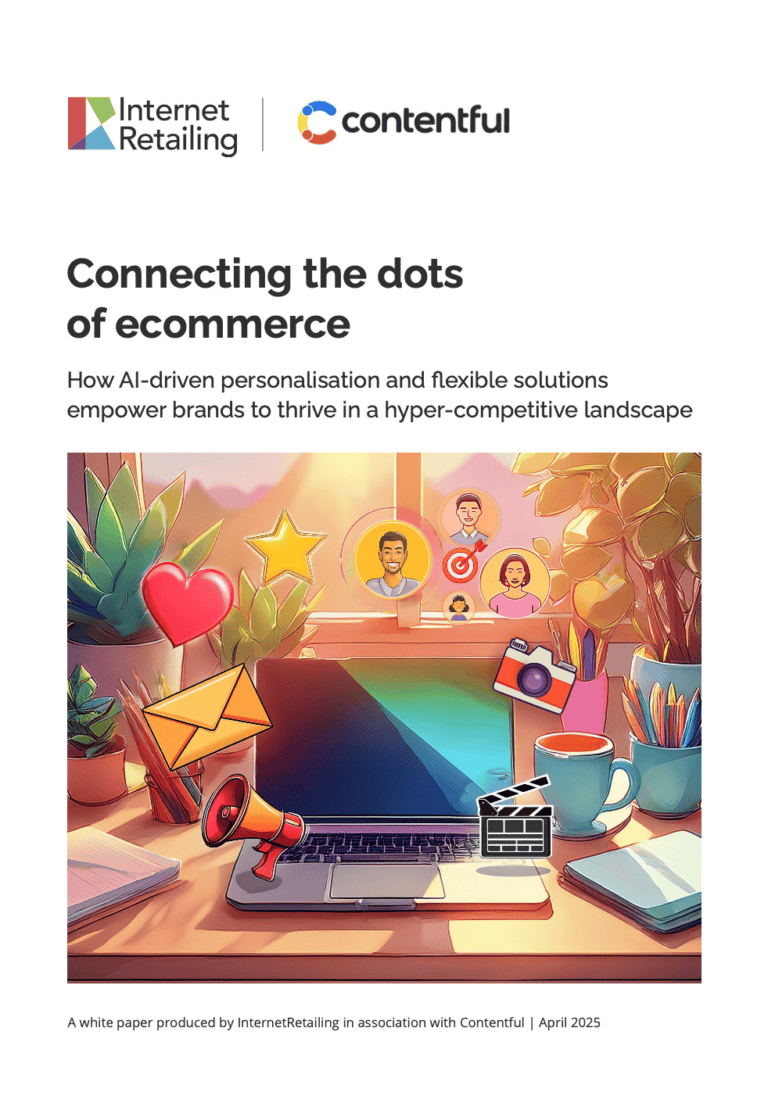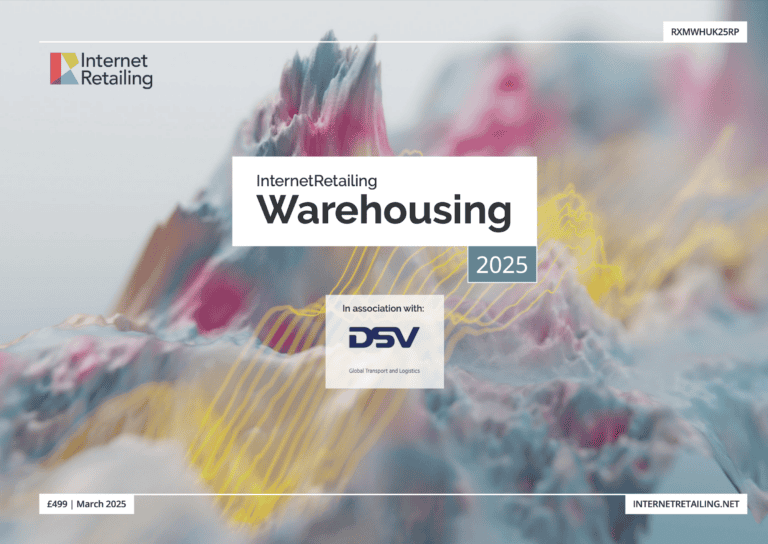Is Amazon’s ecommerce dominance about to dwindle? A new study released today by Wunderman Thompson Commerce has found that younger consumers report less satisfaction with the retail giant than older generations – and are stopping using it.
Wunderman’s latest Future Shopper report takes an in-depth look at the current commerce landscape through the lens of the modern shopping journey and found that, while Amazon attracts more than a third of all online retail spend internationally (36%), 16 to 24-year olds are less likely than older shoppers to believe the marketplace provides the best experience when it comes to access to brands, easy returns and customer service.
Almost one in five (18%) Gen Z consumers also said they were swayed by brand ethics when making a purchase decision, a factor which would see them choose another retailer over Amazon. Only 36% of Gen Z shoppers turn to search engines for inspiration
For brands and retailers, the study reveals a key challenge in the online shopping journey. While consumers are relatively platform-agnostic when it comes to finding inspiration for purchases, this behaviour changes when they search for products. More than half (51%) of consumers said they turn to Google and other search engines for inspiration or ideas for products to buy, while 33% said the same for brand websites and 32% for social media. However, when it comes to actively searching for individual products to buy online, 56% of consumers go directly to Amazon to start their search.
Although the statistics reflect Amazon’s increasing dominance, there were certain factors that shoppers said would influence their decision to shop elsewhere. For consumers to choose other retailers and brands over Amazon, they look for cheaper pricing (61%), more attractive loyalty programmes (26%), more convenient delivery options (23%) and a better, more specialised product range (18%)
Consumers are also still craving an in-store experience, finds the study; almost half (46%) say they prefer to shop with a brand that has a physical store, which rises to 49% among Gen Z shoppers.
Neil Stewart, Global CEO, Wunderman Thompson Commerce said: “Brands and retailers continue to grapple with the challenge of how to exist alongside Amazon. While the retail giant may be a competitor, it is also a platform that can give brands and retailers enormous scope to reach millions of consumers globally. The most important thing is that they find a way to partner with Amazon but still own the relationship with the customer; now and into the future.”
Where Amazon isn’t number one
The Future Shopper report also found that, when purchasing products, there is only a handful of product categories in which Amazon is not the number one purchase destination. For example, when buying clothing and fashion, 26% of consumers shop on retailer sites like Selfridges, compared to 17% on Amazon and when buying health and beauty products, 24% of shoppers prefer to go to retailer sites, compared to 21% who shop on Amazon.
Similarly, for luxury items such as high-end clothing, watches and jewellery, 21% prefer to buy from the website of the brand directly, while in other categories, including entertainment, technology and home and garden products, Amazon is the preferred way to buy items.
Stewart continues: “Amazon Prime is the world’s most advanced loyalty program and has completely changed what ‘good’ looks like for consumers. Expectations are set incredibly high by the speed, ease and convenience of the Prime service but, rather than relying solely on replicating this model, brands and retailers need to find the areas where Amazon falls down in the eyes of consumers. Focus on “What Amazon Cannot Do” (WACD) and this is where your company can compete. The future of retail is up for grabs for the companies that can tap into what customers will want from their shopping experience in five, 10 and 15 years’ time.”
Experience has it
The way to trump Amazon, believe some, now lies in offering experiences over utility, with the Amazon infinite aisle now a tired trope.
Michael Schirrmacher , Managing Director UK at Bloomreach believes that what shoppers want are great experiences. “They want to feel valued, shop with ease and get access to the right products quickly and simply. This is especially true for younger consumers. Growing up with the online world at their fingertips, this generation expect instant access to what they want and the information they need as standard. Amazon’s almost infinite product range is a huge competitive advantage, but the actual experience of using Amazon is as tired and frustrating as flipping through an old phone directory. It simply doesn’t cut it. Wunderman Thompsons’ research clearly shows that fewer and fewer people have the patience for the sluggish and outdated experience Amazon offers. What people actually want are contextual and highly relevant shopping experiences.”
He continues: “Going big on personalisation and tailored experiences that encourage customer loyalty and spend is where competing retailers and brands can play an advantage. People chose where to shop based on the experience they receive. Whether on web or mobile, only by using digital experience platforms that combine AI Search and Merchandising with a Connected CMS is it possible to build more effective, differentiated customer experiences. That might mean delivering search results that truly fit the query, or it might mean ensuring the homepage highlights products that fit the user’s interests.”
David Nicholls, Chief Technology Officer for Retail and Hospitality at Fujitsu UK agrees: “To attract the next generation of shoppers, retailers must look to create an experience that will make customers become brand advocates. The report shows that consumers crave a digitally innovative experience, underlining that technology has a role in re-inventing the in-store experience, building excitement and engagement, and creating a memorable and relevant relationship between the customer and the retailer. Store employees are a key differentiator for high street retailers and can connect with customers in a more personalised and empathetic way; creating shopping experiences that can surprise and delight customers with fantastic customer service.”
Nicolls continues: “Those high street retailers who are best equipped to benefit from the changing trends of Generation Z understand that when store employees are engaged, passionate and motivated at work, they can significantly improve the customer experience. By giving those on the shop floor a voice and supporting them with the technology and systems to make informed decisions, retailers can free up more time for colleagues to engage with their customers and create retail experiences that will continue to attract this next generation of shoppers to the high street.”
A key part of this lies in increasing interaction between consumers and brands, as well as letting consumers feel that they are influencing brands, believes Philippe Loeb, Consumer Goods, CPG & Retail Industry VP, Dassault Systèmes. According to Loeb: “Businesses today must look beyond the aesthetics of a product or the practicalities of a service. Consumer engagement and loyalty count far more than features and benefits alone – so much so, consumers expect to interact with or even influence suppliers. As a result, products are no longer enough for today’s consumers who value being a customer as much as a creator. Nothing embodies this shift as much as the rise of co-creation with brands asking their customers to design new products, or even select the ones that would make it to the market.”
Loeb adds: “The retail sector is now also heavily influenced by social networks, playing a vital role in consumers’ online buying behaviour through advertising and the rise of voice activated and algorithmic commerce. It is no longer a simple task to attract the consumer and business models need to be more agile and flexible to adapt continually to the whims of buyers.”
“Loyal consumers want to be part of the brand’s journey – providing them with the tools to help design and bring to market a product they love will allow businesses to build a stronger, more personalised rapport with each of their customers, and lead to a more creative approach to retail.”









